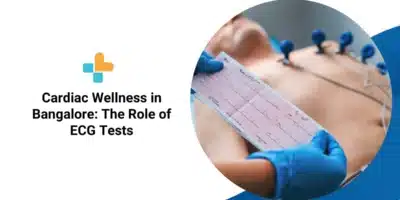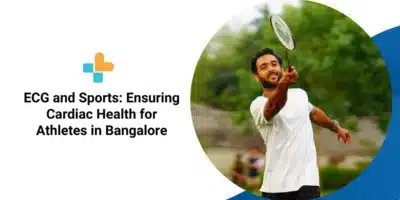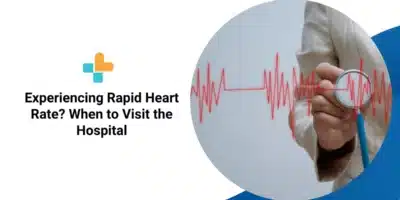You may think the cramps and discomfort you’re experiencing are simply the effects of growing older, and that it is inevitable and incurable. When actually, that may be the furthest thing from the truth if you have Peripheral Artery Disease (PAD). The symptoms of PAD are fully curable and manageable, and the best place to start would be to know which are the best exercises for peripheral artery disease.
But before we get to that, let’s learn a little bit more about PAD, starting with its signs and symptoms.
Signs and Symptoms of PAD
Many people with peripheral artery disease have little or no symptoms, although some people have leg pain while walking (claudication).
Claudication causes muscular soreness or cramping in your legs or arms that is induced by movement, such as walking but goes away after a few minutes of rest. The position of the blocked or narrowed artery determines the location of the pain. The calf is the most common site of discomfort.
Claudication can range in severity from slight discomfort to incapacitating agony. You may find it difficult to walk or engage in other forms of physical exercise if you have severe claudication.
The following are indications and symptoms of peripheral artery disease:
- Severe cramps in one or both hips, thighs, or calves after certain activities like climbing stairs.
- Numbness or weakness in the legs
- Coldness in your lower leg or foot, particularly on one side
- Open sores on your toes and feet
- Slower toenail growth, possible hair fall
- Weak pulse in your legs or feet
- Erectile dysfunction in men
- Pain while using arms doing manual tasks such as writing or typing
Risk Factors of PAD
Peripheral artery disease is caused by a number of factors, including
- Diabetes
- Obesity
- High blood pressure that is too high
- High cholesterol
- Old age(over 65). Or 50, if you have atherosclerosis risk factors
- Family history, genetics
The restricted blood flow means that those who smoke or have diabetes are at the highest risk of developing peripheral artery disease.
The Best Exercises for Peripheral Artery Disease
Exercise may seem counterproductive for treating PAD, especially when simple movements like walking become difficult. But as the root of this disease is a lack of blood circulation, exercise (in the right way) can significantly improve your symptoms.
1. Don’t forget to warm-up
People often tend to skip the warm-up and go straight into the activity, which is leading to unwanted injuries. If you have PAD, you absolutely must not skip this crucial part of your workout routine. Stretch your legs and thigh muscles for at least 10-15 seconds each before getting started. This avoids sudden muscle stretches and prepares your muscles for further activities.
2. Interval walking
Walking is one of the finest workouts for PAD. This low-impact workout raises your heart rate and can increase mobility and blood flow over time. You are likely to feel some soreness at first, but it will ease as you move.
Begin cautiously, striving to maintain a good speed, and continue to walk even if you experience slight discomfort. Another technique to build the walking habit is interval walking where you take a pause and relax for a few minutes when the discomfort gets too much to bear. Your aim should be to add five minutes to each walking session every week until you can walk for 45 minutes without stopping.
3. Supervised Exercise Therapy (SET)
SET is an efficient treatment for reducing the pain symptoms in patients dealing with claudication from PAD.
| Session Requirements | The SET sessions last 30-60 minutes including therapeutic training programs for PAD with claudication |
| Setting Requirements | It is conducted in a hospital outpatient setting or a physician’s office |
| Supervision | The sessions are supervised by qualified personnel who are highly trained in exercise therapy for PAD. They ensure that the benefits exceed the harm |
The core of SET is treadmill-based exercise regimens. Participants are advised to walk on the treadmill until they have mild to moderate pain after a five-minute warm-up phase
They are then instructed to stop, sit, and rest until the pain has subsided. Then they start walking again. The objective is to complete a 50-minute workout session (including break times), with a five-minute warm-up and cool-down periods added to bring the total session time to 60 minutes.
4. Swimming or water training
If walking is too strenuous for your legs, your physical therapist may suggest water therapy or other types of exercise. With water training and swimming, the water carries most of your body weight, so your legs aren’t bearing the brunt of it.

The resistance provided by water can be highly effective in modulating the movements of your leg muscles and building up its own resistance against movement. If swimming is not quite possible yet, even walking or peddling in one place in the swimming pool has proven to be quite useful in dealing with PAD.
5. Switching it up
These aren’t the only forms of exercise that can help you improve your circulation. Consider using a stationary cycle, an elliptical, or even mild yoga to get your blood pumping without putting a strain on your lower body. If your legs are in too much discomfort, you can concentrate on other parts of your body, such as your core muscles and the upper body. Any type of exercise can help your circulation, overall health, and PAD symptoms.
Frequently Asked Questions
- Can exercise reverse peripheral artery disease?
No, there is no cure for peripheral artery disease. But a regular and proper exercise regimen can slow the progression and possibly reverse its symptoms.
- Does exercise improve peripheral artery disease?
Exercise is the cornerstone of treating the symptoms of peripheral artery disease, since the pain in the legs, feet, etc., is mainly caused due to a lack of circulation.
- How can I improve my peripheral arterial circulation?
A stationary cycle, an elliptical, or even mild yoga to get your blood pumping is beneficial in improving peripheral arterial circulation, aside from Supervised Exercise Therapy (SET).
- Is walking good for blocked arteries in the legs?
Yes, walking is good for blocked arteries in the legs since the movement of the muscles is key to improving blood circulation.
- Can walking cure a PAD?
PAD does not have a cure but walking, along with other exercises, can reduce the pain and discomfort caused by PAD.
- Can walking reverse PAD?
PAD cannot be reversed but walking, along with other exercises, can reduce the pain and discomfort, and even reverse the symptoms to an extent.
- Can yoga help PAD?
Patients with high blood pressure may benefit from mild, low-intensity yoga exercises for peripheral artery diseases to reduce hypertension and improve blood circulation.
- What foods help PAD?
Fruits, vegetables, lean meats, and whole grains are some of the greatest overall foods to eat for PAD, while monounsaturated, polyunsaturated, and Omega3 fats are all beneficial as well.
Always remember to consult a specialist before beginning an exercise regimen, lest it turns out to be counterproductive. Don’t let peripheral artery disease take away the joys of feeling healthy in your own body and doing the things that you love. Book a consult atAyu Health, and get started with your own personalized best exercise plan for peripheral artery disease. Book an appointment on the Ayu Health website or call us at 08069489584.
Our Hospital Locations
Cardiology Surgery Hospitals in Chandigarh | Cardiology Surgery Hospitals in Bangalore | Cardiology Surgery Hospitals in Jaipur | Cardiology Surgery Hospitals in NCR | Cardiology Surgery Hospitals in Hyderabad
Our Doctors
Cardiology Surgery Doctors in Chandigarh | Cardiology Surgery Doctors in Bangalore | Cardiology Surgery Doctors in Jaipur | Cardiology Surgery Doctors in NCR | Cardiology Surgery Doctors in Hyderabad
About the Author

Dr. Darshan Krishnappa
Dr. Darshan Krishnappa is a renowned cardiologist currently practicing at Ayu Health, Bangalore.
Dr. Darshan Krishnappa is a Cardiologist with 7 years of experience. He completed his MD in Internal Medicine from the prestigious All India Institute of Medical Sciences, New Delhi. He is specialized in cardiology.




